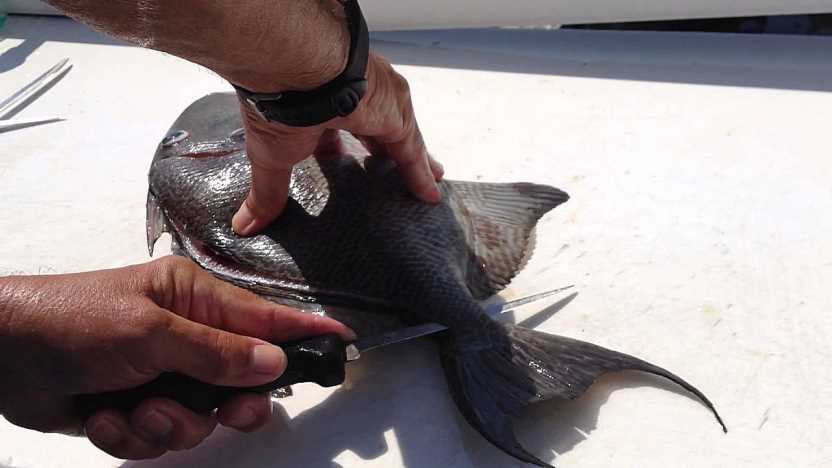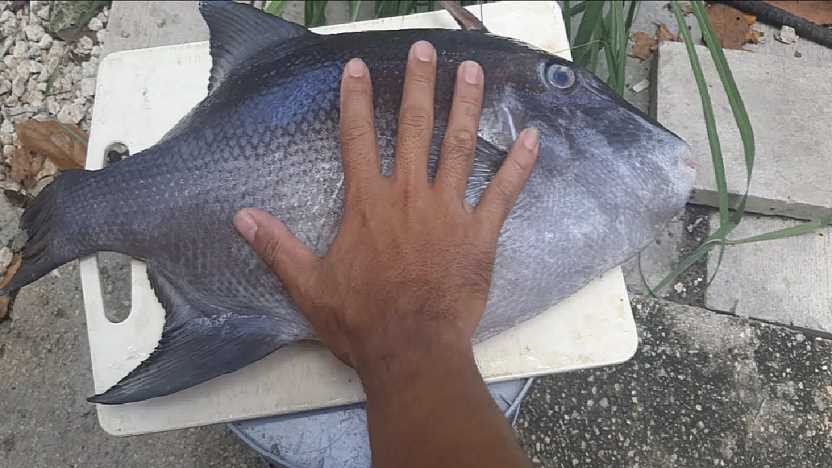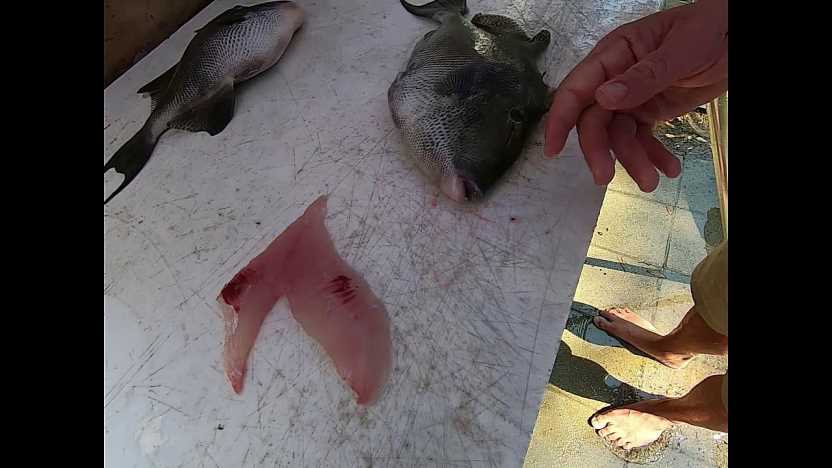 When it comes to triggerfish, proper cleaning techniques are essential to maintain their freshness and taste. In this guide, we will walk you through the step-by-step process of cleaning a triggerfish, ensuring you achieve spotless results every time. By following these cleaning tips and best practices, you’ll not only enhance the flavor of your catch but also promote responsible fishing practices.
When it comes to triggerfish, proper cleaning techniques are essential to maintain their freshness and taste. In this guide, we will walk you through the step-by-step process of cleaning a triggerfish, ensuring you achieve spotless results every time. By following these cleaning tips and best practices, you’ll not only enhance the flavor of your catch but also promote responsible fishing practices.
Understanding Triggerfish
Before we dive into the cleaning process, let’s get to know triggerfish a little better. Triggerfish are fascinating creatures with unique characteristics and behaviors. They come in various species, each with its own distinct markings and colors. Some popular species include the Picasso triggerfish, clown triggerfish, and titan triggerfish.
Triggerfish are known for their strong jaws and sharp teeth, which they use to crush their prey, primarily crustaceans and small fish. They also possess a unique defense mechanism—a dorsal fin that can be locked into an upright position by a trigger-like bone. This feature helps protect them from predators and gives them their name.
Preparing for Cleaning
Before you start cleaning your triggerfish, make sure you have the necessary tools and equipment on hand. You’ll need a sharp fillet knife, a cutting board, a scaler or spoon, a pair of kitchen shears, gloves for protection, and a container for waste disposal. Safety should always be a priority, so consider wearing protective gloves and ensuring a stable working area.
Proper handling and storage of the catch are crucial for maintaining its quality. Keep the triggerfish on ice or in a cooler until you’re ready to clean it. This helps preserve its freshness and prevents spoilage. Remember, a fresh catch ensures a flavorful meal!

Step-by-Step Guide: How to Clean a Triggerfish
Step 1: Removing the scales. Use a scaler or the back of a spoon to scrape off the scales from the triggerfish. Start from the tail and work your way towards the head, ensuring you cover both sides of the fish.
Step 2: Gutting the fish. Make a shallow incision along the belly of the triggerfish, from the vent to the base of the head. Use your fingers or a spoon to carefully remove the entrails and rinse the cavity with cold water.
Step 3: Removing the head and fins. Position the triggerfish upright and use kitchen shears to cut off the head just behind the gills. Trim the pectoral and pelvic fins, ensuring you remove any sharp spines.
Step 4: Filleting the fish. Starting from the tail, make a vertical cut along the backbone towards the head. Gently separate the flesh from the rib bones, following the natural curve of the fish.
Step 5: Removing the skin (optional). If desired, you can remove the skin from the fillets by sliding the knife between the flesh and the skin, using a sawing motion.
Step 6: Cleaning the fillets. Rinse the fillets with cold water to remove any remaining debris or blood and pat them dry with paper towels. Inspect the fillets for any remaining bones and use tweezers or pliers to carefully remove them. This ensures a smooth and enjoyable dining experience.
Step 7: Proper storage and disposal of waste. After cleaning the triggerfish, store the fillets in an airtight container or wrap them tightly in plastic wrap to maintain their freshness. Dispose of the waste properly, either by sealing it in a bag and placing it in the trash or by burying it in a designated area away from water sources.
Tips for Cleaning Triggerfish
Dealing with tough skin and scales. Triggerfish can have thick and tough skin, making scaling a bit challenging. To make the process easier, you can try soaking the fish in cold water for a few minutes before scaling. This helps loosen the scales and makes them easier to remove.
Proper handling of triggerfish’s spines. While cleaning triggerfish, be cautious of their sharp spines, especially near the fins and dorsal area. Use kitchen shears or a sharp knife to carefully remove the fins, ensuring you don’t get pricked.
Maximizing the yield when filleting. Triggerfish have firm and flavorful flesh, and you can maximize your yield by utilizing the bones for stock or broth. After filleting the fish, save the head, tail, and bones in a freezer bag and keep them in the freezer until you’re ready to make a delicious fish stock or broth.
Utilizing the triggerfish’s bones for stock or broth. Once you have collected enough triggerfish bones, you can simmer them in water with aromatics like onions, celery, and herbs to create a flavorful fish stock. This stock can be used as a base for soups, stews, or sauces, adding depth and richness to your culinary creations.
Safety Considerations
Using protective gloves and equipment. It’s essential to prioritize your safety while cleaning triggerfish. Wear protective gloves to safeguard your hands from any potential cuts or injuries. Additionally, ensure that your knife is sharp to make clean and precise cuts, reducing the risk of accidents.
Proper knife handling techniques. When handling a knife, always maintain a firm grip and keep your fingers away from the blade. Use a cutting board with a non-slip surface to provide stability and prevent the fish or board from sliding during the cleaning process.
Hygiene practices to prevent contamination. To maintain cleanliness and prevent cross-contamination, wash your hands thoroughly with soap and water before and after handling the triggerfish. Clean all utensils, cutting boards, and surfaces used in the cleaning process with hot soapy water or a sanitizing solution.

Cooking and Serving Triggerfish
After mastering the art of cleaning triggerfish, it’s time to explore various cooking methods to highlight its delicate flavors. You can grill, bake, pan-fry, or even steam the fillets, depending on your preferences and the recipe you choose.
Experiment with different flavor profiles and seasoning options. Triggerfish pairs well with citrusy marinades, fresh herbs like dill or thyme, and spices such as paprika or cayenne pepper. Don’t be afraid to get creative in the kitchen and let your taste buds guide you!
When it comes to presentation, consider garnishing your cooked triggerfish with colorful vegetables, a squeeze of lemon or lime juice, and a sprinkle of fresh herbs. Play with plating techniques to create an eye-catching and appetizing dish that will impress your guests.
Conclusion
Properly cleaning a triggerfish is essential to maintain its quality and taste. By following the step-by-step guide and incorporating the tips and safety considerations provided, you can ensure a spotless cleaning process and promote responsible fishing practices.
Remember, cleanliness and hygiene go hand in hand with enjoying a delicious meal. So, embrace the art of triggerfish cleaning, savor the flavors it offers, and continue to appreciate the value of proper cleaning techniques. Happy fishing and bon appétit!
Leave a Reply